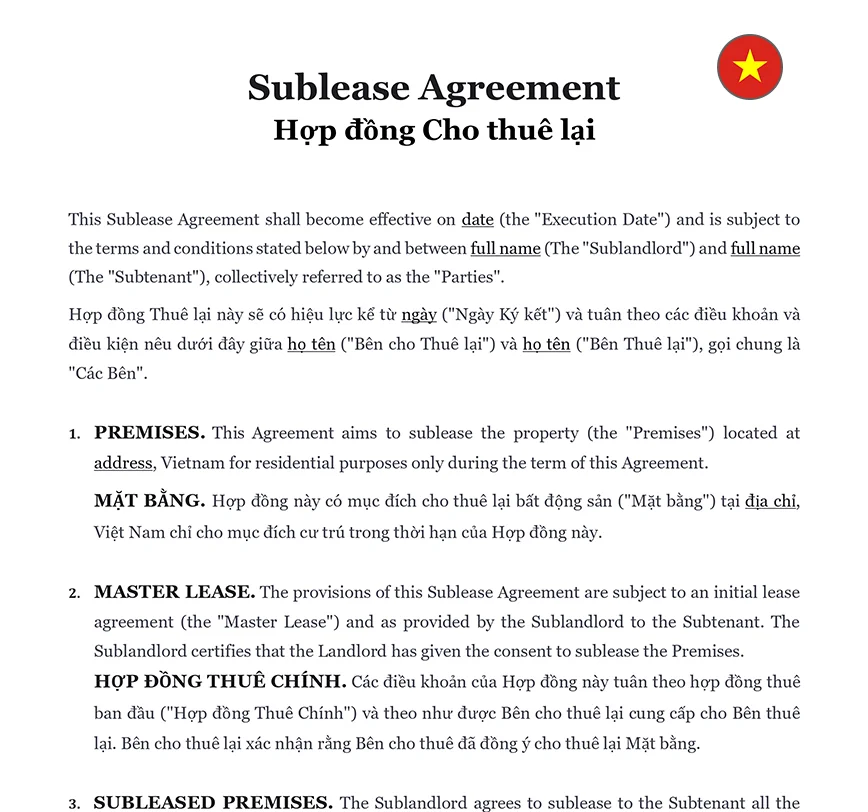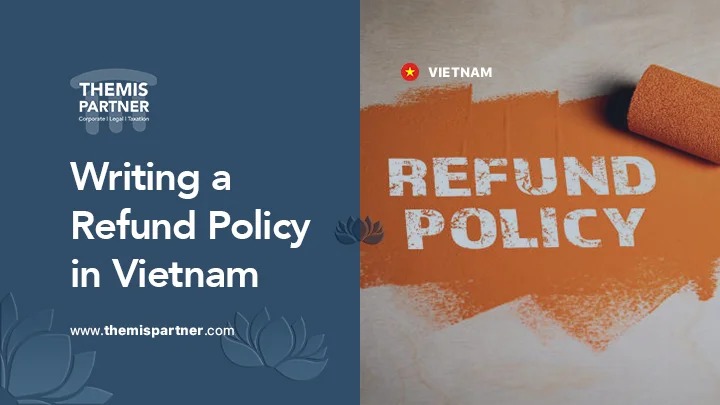Understanding Subletting in Vietnam
Subletting, or renting out a property you lease to another tenant, involves several legal considerations under Vietnamese law. The Civil Code 2015 outlines the general principles governing leases, including subletting. It’s essential to familiarize yourself with these regulations to avoid any legal issues. Subletting without adhering to these laws can lead to disputes and potential legal consequences, so ensuring compliance from the outset is crucial for a smooth process.
ℹ️ Read How to Legally Allow Subleasing in Your Property for understanding legal requirements.
Drafting a Sublease Agreement
A Sublease Agreement is a critical document that formalizes the subletting arrangement between the original tenant and the new subtenant. This agreement should be comprehensive and cover several key aspects:
Rent Amount: Clearly specify the rent amount the subtenant will pay, how it will be paid, and the due dates. This prevents any confusion or disputes over payments.
Duration: Define the start and end dates of the sublease. Ensure that the sublease term aligns with the remaining term of your original lease to avoid overlaps or gaps.
Responsibilities: Outline the responsibilities for maintenance, repair, and payment of utilities. Clearly delineate who is responsible for which tasks to avoid misunderstandings.
Termination Terms: Include conditions under which the sublease can be terminated early by either party, including any penalties or notice periods required.
For a well-structured Sublease Agreement, you can explore Themis Partner’s templates designed to meet Vietnamese legal standards. Use our Sublease Agreement Template for formalizing subletting arrangements.
Key Legal Requirements for Subletting
Several legal requirements must be met to legally sublet your apartment in Vietnam:
1. Landlord Consent
Obtaining written permission from your landlord is mandatory. Without this consent, you risk breaching your lease agreement, which could result in lease termination or legal action.
- Remarks:
Use our Consent to Sublease template for formalizing this request.
2. Lease Agreement Review
Carefully review your original lease agreement to ensure it does not prohibit subletting. Some leases include specific clauses that restrict or outline the conditions for subletting.
3. Local Registration
Depending on your location, you may need to register the sublease with local authorities. Check with your local municipal office or visit official websites for guidance on registration requirements. Learn from How to Avoid Common Rental Contract Mistakes in Vietnam for additional tips.
Steps to Legally Sublet Your Apartment
To ensure you comply with all legal and procedural requirements, follow these detailed steps:
1. Review Your Lease Agreement: Examine your lease agreement thoroughly to confirm that subletting is allowed and identify any restrictions or conditions that apply.
2. Obtain Landlord Approval: Contact your landlord to request written permission for subletting. Provide details of the proposed subtenant and the terms of the sublease to facilitate a smooth approval process.
3. Screen Potential Subtenants: Conduct background checks and interviews to find a reliable and responsible subtenant. Ensure they meet any criteria set by your landlord or your original lease agreement.
4. Sign the Agreement: Have both you and the subtenant sign the Sublease Agreement. Ensure that both parties retain copies of the signed document for their records.
5. Register with Authorities (if needed): If required, register the sublease with local authorities to comply with local regulations. This step may vary depending on your city or municipality. Check the official website of the Hanoi People’s Committee or your local municipal office for specific regulations.
Essential Clauses in a Sublease Agreement
A well-drafted Sublease Agreement should include several essential clauses to protect both parties involved:
| ➤ Parties Involved: Clearly identify the original tenant and the subtenant, including their full names and contact details. |
| ➤ Property Description: Provide a detailed description of the rented apartment, including the address and any included furnishings or appliances. |
| ➤ Rental Terms: Specify the amount of rent, payment due dates, and acceptable payment methods. Clarify how and when payments should be made. |
| ➤ Maintenance: Define the responsibilities for property upkeep, including who will handle repairs and maintenance tasks. Outline procedures for reporting and addressing issues. |
| ➤ Termination Terms: Detail the conditions under which the sublease can be terminated early, including required notice periods and any associated penalties or fees. |











